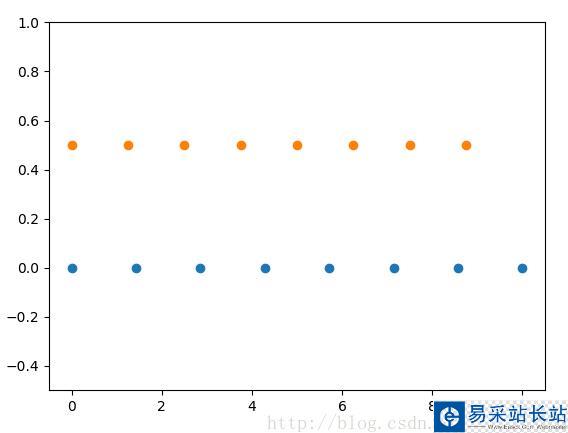如下所示:
numpy.linspace(start, stop, num=50, endpoint=True, retstep=False, dtype=None)
start:起始值 stop:结束值
num:生成的个数
endpoint True:包含 False:不包含 默认True
restep:显示相邻两数之差 默认不显示
dtype: 输出类型 默认不显示
同时,arange 是通过设置样本之间的差值来生成数组的。
import numpy as npx1 = np.linspace(2.0, 3.0, num=5)print x1x2 = np.linspace(2.0, 3.0, num=5, endpoint=False)print x2x3 = np.linspace(2.0, 3.0, num=5, retstep=True)print x3
结果:
[ 2. 2.25 2.5 2.75 3. ] [ 2. 2.2 2.4 2.6 2.8] (array([ 2. , 2.25, 2.5 , 2.75, 3. ]), 0.25)
图示:
import numpy as npimport matplotlib.pyplot as pltN = 8y = np.zeros(N)x1 = np.linspace(0, 10, N, endpoint=True)x2 = np.linspace(0, 10, N, endpoint=False)plt.plot(x1, y, "o")plt.plot(x2, y + 0.5, 'o')plt.ylim([-0.5, 1])plt.show()

以上这篇numpy.linspace 生成等差数组的方法就是小编分享给大家的全部内容了,希望能给大家一个参考,也希望大家多多支持武林站长站。
新闻热点
疑难解答